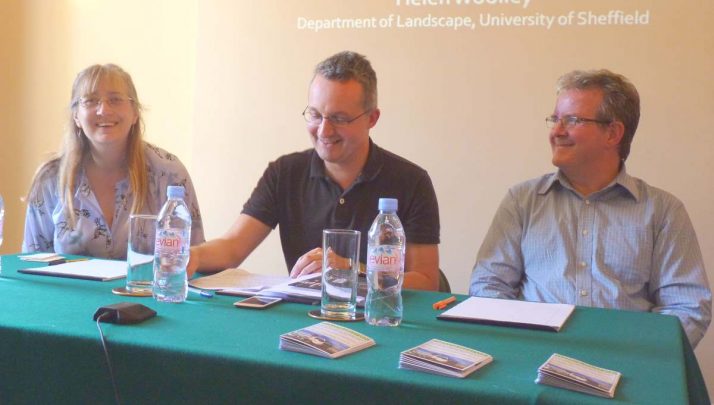 Seminar
SeminarThursday 28 June 2012
6:00pm – 7:45pm
After the Disaster: Returning to Normal Life and Play in Tohoku
Drinks reception from 8:45pm
Daiwa Foundation Japan House
Organised by the Daiwa Anglo-Japanese Foundation
Much western attention on Japan since 11 March 2011 has focused either on the implications of the nuclear disaster at the Fukushima Daiichi nuclear power plant, or on the recovery of the nation’s economy. While these issues remain of great importance, it seems that the effects of the tsunami on the lives of ordinary citizens in the affected regions are beginning to fade into the background, as the world turns its attention elsewhere. Moreover, due to the large proportion of older people in the population, and the disproportionate effects of the tsunami on them, the impacts of the disaster on children and how they are able to return to normality have sometimes been overlooked. In this seminar, Peter Matanle looked at plans for the reconstruction of the tsunami affected areas and assessed progress achieved thus far, while Helen Woolley focused in detail on how the tsunami has affected children’s play. In particular, she illustrated the current state of where children used to play in the outdoors, described the context of children’s outdoor play in temporary housing areas and began to address some issues for the future as local citizens try to put the disaster behind them, put their lives back together, and re-establish a normal life for their children once more.
About the contributors

Dr Peter Matanle
Dr Peter Matanle is Lecturer in Japanese studies at the National Institute of Japanese Studies and School of East Asian Studies, University of Sheffield. His research is in the social and cultural geography of Japan, and the role of employment systems in Japan’s developmental and post-developmental processes. He has published four books and various peer reviewed articles and book chapters in these fields including, Japan’s Shrinking Regions in the 21st Century: Contemporary Responses to Depopulation and Socioeconomic Decline (co-authored with Anthony S. Rausch and the Shrinking Regions Research Group, Cambria Press, 2011), and ‘The Great East Japan Earthquake, Tsunami, and Nuclear Meltdown: Towards the (Re)construction of a safe, sustainable and compassionate society in Japan’s shrinking regions’ (Local Environment, 16 (9): 843-847).

Helen Woolley
Helen Woolley is a Chartered Landscape Architect and Reader in Landscape Architecture and Society in the Department of Landscape at the University of Sheffield. Helen’s research is about issues of open space and people. This has related to, and informed, national policy and strategic issues about green and open space with an increasing focus on green space and housing in recent years. She is also an expert on inclusive outdoor environments with a particular interest in children and open spaces. Helen has a strong record of knowledge transfer and consultancy activities working with a wide range of partners including some in the built environment, play and housing sectors. These research and knowledge transfer activities have been funded by research councils, government departments, national organisations and charities. In April Helen visited the Tohoku area of Japan with a colleague from Chiba University to begin to understand the situation of children’s outdoor environments in the post disaster area.

Dr Christopher P. Hood (chair)
Dr Christopher P. Hood is a Reader in Japanese Studies at Cardiff University. His latest book Dealing with Disaster in Japan: Responses to the Flight JL123 Crash (Routledge, 2011) is about responses to the world’s largest single plane crash which occurred in Japan in 1985. The book covers a variety of issues, including how the state reacted and the way those who lost loved ones have responded over the years. A chapter related to this work appears in Death and Dying in Contemporary Japan (Routledge, 2012) edited by Hikaru Suzuki. He was a part of the ‘Shrinking Regions Research Group’, whose research was edited by Peter Matanle and Anthony Rausch into Japan’s Shrinking Regions in the 21st Century (Cambria Press, 2011). Other publications include: Shinkansen: From Bullet Train to Symbol of Modern Japan (Routledge, 2006), Japanese Education Reform: Nakasone’s Legacy (Routledge, 2001), and The Politics of Modern Japan (4 volumes) (editor, Routledge, 2008).